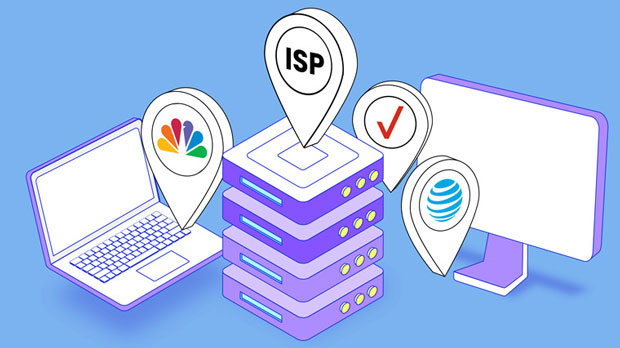In the world of online automation, proxies are an essential tool for maintaining anonymity, bypassing geo-restrictions, and ensuring efficient operations for large-scale tasks. Among the various types of proxies available, socks5 proxies are particularly popular due to their flexibility, security, and high performance. However, not all socks5 proxy servers are created equal, especially when it comes to large-scale automation tasks. Choosing the right Socks5 proxy for such projects requires careful consideration of several factors such as speed, reliability, geographical distribution, security features, and the specific demands of the automation task. This article will provide a comprehensive guide to help you select the most suitable Socks5 proxy for large-scale automation, ensuring your operations run smoothly and efficiently. Understanding Socks5 ProxiesBefore diving into the specifics of choosing the right Socks5 proxy, it is important to understand what makes them a preferred option for large-scale automation tasks.Socks5 proxies are an advanced version of the Socks protocol. Unlike HTTP or HTTPS proxies, which only handle web traffic, Socks5 proxies can route all types of internet traffic, including FTP, SMTP, and peer-to-peer connections. This makes Socks5 proxies highly versatile and valuable for automation tasks that need to handle various types of protocols beyond just web browsing.Additionally, Socks5 proxies offer improved security compared to older versions. They support authentication methods to ensure only authorized users can access the proxy server, which enhances privacy and protection against unauthorized access. This feature is especially crucial when automating tasks that require sensitive data, such as account management, online purchasing, or data scraping.Key Considerations When Choosing Socks5 Proxies for AutomationTo successfully choose the right Socks5 proxy for large-scale automation, it’s important to evaluate the following key factors:1. Speed and Latency Speed and latency are critical aspects of any large-scale automation task. Whether you are scraping data, automating social media accounts, or managing multiple online identities, the response time of the proxy can directly impact the efficiency and success of your task. When selecting a Socks5 proxy, prioritize those with low latency and fast connection speeds. Proxy servers located closer to the target server or data source are likely to perform better in terms of speed. Moreover, some proxy services offer optimized servers specifically designed for automation, which can significantly enhance performance.2. Reliability and Uptime Proxies with high reliability and uptime are essential for ensuring that automation tasks run smoothly without unexpected disruptions. Proxies that frequently go down or experience intermittent connectivity issues can disrupt large-scale automation processes, leading to inefficiencies or task failure. Look for Socks5 proxy services with a reputation for high uptime (preferably above 99.9%) and provide consistent, uninterrupted connectivity. Some services even offer service level agreements (SLAs) that guarantee uptime, which can provide added security for mission-critical automation tasks.3. Geographical Distribution and IP Rotation Geographical location of proxies plays a significant role in automating tasks that require region-specific content or services. For example, if you need to access content that is geographically restricted or manage multiple accounts from different regions, having a wide range of IPs spread across various countries is crucial. Many large-scale automation tasks, such as scraping data or creating fake traffic for advertising purposes, require proxy IPs to be rotated frequently. This helps to avoid detection and bans due to suspicious activity. Look for Socks5 proxy providers that offer large proxy pools, automated IP rotation, and geographic targeting.4. Security Features Security should never be compromised, especially when performing sensitive or confidential automation tasks. Socks5 proxies provide an added layer of security compared to other types of proxies by supporting user authentication and offering encrypted data transmission. Additionally, ensure that the Socks5 proxy you choose offers features like IP whitelisting, secure tunneling, and anti-detect features to help mask the traffic and protect the anonymity of your operations. Proxies with enhanced security are particularly useful when working on projects involving account management, financial transactions, or web scraping.5. Bandwidth and Traffic Limits Large-scale automation often requires a significant amount of bandwidth, particularly if your task involves processing large amounts of data or accessing websites at a high frequency. Be sure to choose Socks5 proxies that offer sufficient bandwidth and avoid those with strict traffic limitations. Some proxy providers may offer unlimited bandwidth, while others impose data transfer caps that could restrict the scale of your automation task. Carefully review the bandwidth options available and ensure they align with the scope of your project.6. Pricing and Scalability For large-scale automation, cost-effectiveness is an important consideration. While premium Socks5 proxies often come with superior features and higher performance, the pricing should align with the scale of your operations. Evaluate the pricing plans carefully to determine whether the cost is justified by the performance and features offered. Moreover, consider the scalability of the proxy service. As your automation tasks grow, you may need additional proxies or enhanced features. A good Socks5 proxy provider should be able to accommodate your future needs by offering flexible plans, easy scalability, and the ability to add more proxies as required.Choosing the Right Socks5 Proxy ProviderWhen evaluating various Socks5 proxy providers for your large-scale automation task, it’s essential to consider the overall service quality. While the technical specifications such as speed, reliability, and security features are important, the reputation of the provider also matters. Look for providers with positive customer feedback and strong technical support to assist with any issues that may arise.Also, take advantage of free trials or money-back guarantees that many proxy providers offer. This allows you to test the proxies and determine if they meet your specific needs before making a long-term commitment.Best Practices for Using Socks5 Proxies in Large-Scale AutomationOnce you’ve selected the appropriate Socks5 proxy service, implementing best practices is crucial to ensure the effectiveness and longevity of your automation tasks.1. Monitor Proxy Performance Regularly monitor the performance of your proxies, including speed, latency, and uptime, to identify any potential issues. Tools like proxy rotators or management platforms can help streamline this process and ensure your automation tasks continue without disruptions.2. Rotate Proxies Frequently Frequent proxy rotation is essential to avoid detection and ensure that your automation task remains undetected. Most Socks5 proxy providers offer automatic IP rotation, which can help maintain anonymity and prevent bans.3. Use Multiple Proxy Providers Relying on a single proxy provider may increase the risk of downtime or detection. For large-scale automation tasks, consider using proxies from multiple providers to diversify your proxy pool and reduce the likelihood of encountering issues.4. Ensure Proper Configuration Proper configuration of Socks5 proxies is essential to maximize their benefits. Ensure that your automation tools are configured to work efficiently with the proxies and that authentication (if required) is correctly set up.ConclusionSelecting the right socks5 proxy server for large-scale automation tasks is a critical decision that can significantly impact the success and efficiency of your operations. By considering key factors such as speed, security, reliability, geographical distribution, and scalability, you can choose a proxy service that best meets the needs of your project. Additionally, adopting best practices like regular performance monitoring and rotating proxies can help ensure that your automation runs smoothly, efficiently, and without disruption. With the right Socks5 proxy in place, you’ll be well-equipped to handle large-scale automation tasks with ease and precision.
Dec 23, 2024
![arrow]()



















































